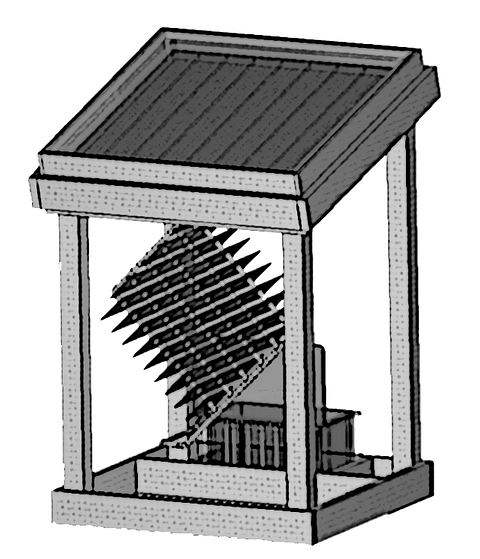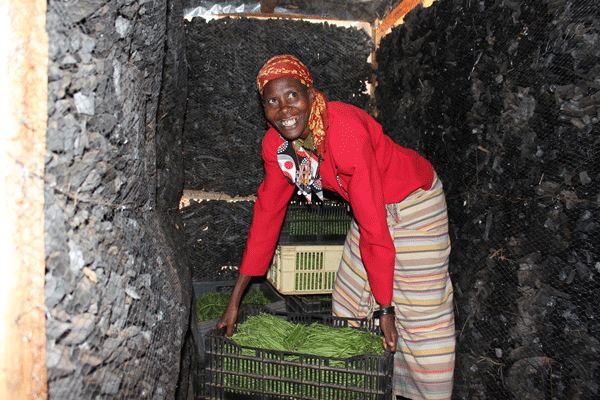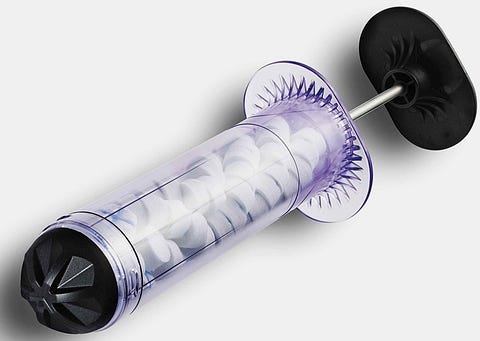Sustainability is an overused and misused word in most languages. In the physical world absolutely nothing is sustainable. Nothing. We need to accept that. What sustains us is change, and our ability to adapt and innovate.
Sustainability is a bit like treading water. What is it you are trying to sustain? The endless economic growth industrial paradigm? Creature comforts that require long supply chains and toxic pollution that hopefully you never have to see? A consumerist ethos backed by military might, sewing discord and terror around the planet? These are the things that must change, quickly, or the change we shall experience will be a very unpleasant human extinction.
Continuing on a thread here, we are bringing you more stories of change and innovation that are seldom covered by mainstream media. But then, we all know mainstream media is going extinct anyway, so who cares about that?
These stories have three things in common. They reverse climate change by gaining new respect for the element carbon upon which all life depends. They are powered by human ingenuity, working as part of, not against, nature. They are driven and emboldened by the astonishing, illimitable, force of youth.
In the rural regions of the world, particularly in the tropics of Latin America, Africa and Asia, precious vaccines and medicines that need to be kept cold wither and spoil in the heat of the midday sun.
It’s not merely a lack of refrigeration but also a lack of electricity and the lack of money. Clinics must often store vaccines for days or weeks before they can be administered to those arriving from distant villages. Keeping live cultures fresh for such a long time is nearly impossible without being able to lower storage temperature. Every year, vaccine spoilage costs billions of dollars and impacts millions of lives.
In 2009 a team of Engineering Students from Michigan State University traveled to a workshop organized by the Appropriate Technology Collaborative in Quetzaltenango, Guatemala. Their task: a refrigerator that can be built from locally available materials almost anywhere and run without power.
Design an adsorption refrigerator capable of maintaining a temperature between 2°C and 8°C that utilizes passive solar energy and can be built in developing countries. The team’s final product will be a clear and comprehensive set of instructions for building the device.
The students built a vaccine refrigerator that does not use electricity. It does not have any moving parts. You simply place it in the sun and it chills or freezes things.
This very remarkable machine runs on pyrolytic carbon. The char does not need to be food grade, as for biochar or activated carbon. It stays inside a closed loop. It could be cascade carbon from a variety of feedstocks. Its essential service is evaporative cooling. The total cost for the prototype was $917.39. Estimated worker cooperative production cost at the scale of three per month, including labor, would be under $300. Their report reads:
Based on the design decision matrices, a solar-powered adsorption refrigerator was selected for the design of the vaccine refrigerator. This refrigerator has no moving parts aside from a few valves. It uses no toxic materials, generally available materials, and should be simple to build and operate. The refrigerator has an intermittent cycle. It will “charge” during the day and remove heat from a cooling volume at night.
Some previously used adsorbent/refrigerant pairs used for solar adsorption refrigeration systems are zeolite and water, silica gel and water, activated carbon and methanol, activated carbon and ammonia, and activated carbon and ethanol. It has been determined that the performance of each pair depends greatly on the climate in which it is tested.
The students looked at all of these adsorbents and the most promising were methanol and ethanol. Methanol is highly toxic and difficult to handle while ethanol is easily obtained from alcoholic beverages in most places, so ethanol became the refrigerant of choice.
The kind of carbon needed has to be able to adsorb ethanol in its vapor form almost instantaneously, so a well-developed pore structure. There are three kinds of pores in pyrolyzed carbon:
- Macropores (>500 Angstrom*)
- Transitional Pores (20–500 Angstrom)
- Micropores (0–20 Angstrom)
*Angstrom = 0.0000001 mm.
Macropores are mostly used for water filtration systems and treating solid waste. Transitional Pores are more suitable for adsorbing large molecules, such as in soil remediation or to remove discoloration. Micropores are the most useful for trapping vapors of any kind.
When analyzing different kinds of activated carbon for this project, there are two main parameters which must be given great consideration. The porosity or the abundance of micropores, and the grain size of the carbon. Powder carbon is not very useful for our application due to its hard handling characteristics. Although more surface area can be achieved with powered carbon, it is difficult to package inside the adsorber bed. Therefore, activated carbon of granular form is preferred instead. The larger grain size makes it easier for packaging inside the adsorber bed and allows the design to be more flexible

ATC Solar Vaccine Refrigerator
The refrigerator has three parts: collector, condenser, and evaporator. At the top is an adsorbent bed/solar collector — a flat tray of wood filled with activated carbon, oriented towards the equator to catch the sun. The entire energy input for the system is solar radiation. As the temperature rises in the morning hours, vapor is rejected out of the charcoal bed. The vapor is forced into the condenser from the pressure of desorption (it is a sealed system). Refrigerant moves from condenser to surrounds, gives off its heat and returns to liquid form.
At night, as the carbon bed cools, its capacity to adsorb vapor increases and the fluid in the condenser is drawn back into the evaporator. As it begins to vaporize in the warm evaporator, it provides the cooling effect. Once the adsorbent bed has reached capacity, it awaits sunrise and the cycle begins again. Meanwhile that “coolth” is circulated into an insulated cooler where the vaccines are stored, lowering its temperature for the following day.
A somewhat simpler charcoal refrigeration example comes from the women of the Bidii Farmers Group in the arid Kambi Sheikh Village in Isiolo County, Kenya. Using charcoal, a wire mesh and a water tank, the women have made an innovative cooler to store their produce for market. Explains Catherine Wanja,
“Charcoal is an ideal material for refrigeration because it has pores, which absorb and store water. This reduces heat from outside. And because wet charcoal does not allow easy passage of heat, it results in low temperatures inside the cubicle.”

Kambi Sheikh Cooperative Charcoal Cooler
The cooler is made from charcoal filled in between six-inch cavity with double wire mesh walls.
The roof is made of iron sheets and is also filled with charcoal. It has a network of perforated water pipes going round the top of the charcoal walls. The pipes are gravity fed water from an overhead tank. The water continuously drips — like a drip irrigation system — all the way to the bottom of the charcoal wall where it can be collected again.
Temperatures in the walk-in fridge drop as low as 8°C (46°F). Wanja says the fridge has a capacity of 20 crates of produce. “Today if the canter that collects the French beans does not come, we are confident that we will not make losses,” she says.
“It is a simple technology that is working for us because we do not have electricity here and we cannot buy a conventional fridge.”
With an increasing number of heat waves, would not having a ‘char-conditioned’ house fifteen degrees cooler provide a bit of relief? Evaporative cooling walls are not new but are generally made from materials with a much higher embodied energy and more limited lifespan than homemade biochar. Carbon can also filter runoff while boosting the resilience of living roofs, not just on homes, but on barns, animal sheds, grain silos, and aquaponic shelters.
Once a cooler, or a building, is chilled by the heat of the sun, there’s the challenge of retaining that coolth through the 24-hour cycle — and longer if the sun doesn’t shine every day where you are. Carbon is coming to the rescue.
Aerogels have recently become hot science. A “multiwalled carbon nanotube aerogel” dubbed “frozen smoke” with a density of 4 mg/cm3 lost its world’s lightest material title in 2011 to a micro-lattice material with a density of 0.9 mg/cm3. Less than a year later, aerographite claimed the crown with its density of 0.18 mg/cm3 and less than a year after that, a new aerogel made from graphene was created by Gao Chao’s team at China’s Zhejiang University. This ultra-light aerogel has a density lower than that of helium and just twice that of hydrogen — just 0.16 mg/cm3.
“With no need for templates, its size only depends on that of the container,” said Prof. Gao. “Bigger container can help produce the aerogel in bigger size, even to thousands of cubic centimeters or larger.”
The result is a material the team claims is very strong and extremely elastic, bouncing back after being compressed. It can also absorb up to 900 times its own weight in oil and do so quickly, with one gram of aerogel able to absorb up to 68.8 grams of organics per second — making it attractive for mopping up oil spills at sea.
Aerogels infused with a plastic material are flexible, like a spring that can be stretched thousands of times, and if the nanotubes in a one-ounce cube were unraveled and placed side-to-side and end-to-end, they would carpet three football fields. Carbon aerogels are also excellent conductors of electricity, ideal for sensing applications and will be finding their way into many electronic devices, like smartphones that bounce harmlessly if dropped. This new form of carbon — diverted from landfills and incinerators — will soon be revolutionizing diapers, sanitary napkins, protective packaging and building insulation.
For inexpensive thermal insulation aerogel, scientists at the National University of Singapore have found a new source — old clothing. Recycled cotton and similar natural fibers can make an ultralight material to keep vaccine refrigerators, beverages, and high rises cold, and also, just by the way, to control bleeding from deep wounds.
Professors Hai Minh Duong and Nhan Phan-Thien say their process is “fast, cheap and green” (about 20 times faster than it takes to fabricate conventional aerogels) — similar to the process by which they previously produced an aerogel from paper waste.
To stop battlefield wounds from bleeding, medics inject mini cellulose-based sponges with a large syringe. Once in the body, they absorb blood and expand, applying pressure to the wound from the inside and stopping blood flow within about 20 seconds.

“Each cotton aerogel pellet can expand to 16 times its size in 4.5 seconds — larger and more than three times faster than existing cellulose-based sponges — while retaining their structural integrity,” says Duong. “The unique morphology of the cotton aerogels allows for a larger absorption capacity, while the compressible nature enables the material to expand faster to exert pressure on the wound.”
The production process is simple — mixing water with carbon fibers from cotton, paper, or whatever, then adding a polymer resin and applying sound energy to agitate the solution. Next, the mixture is poured into molds and frozen at -18ºC (0ºF) for 24 hours, after which it’s freeze-dried at -98ºC (-144ºF) for two days. Finally, it’s cured in an oven at 120ºC (248ºF) for three hours. The final result is an opaque biodegradable, recycled material that is non-toxic, flexible, mechanically strong and oil- or blood-absorbent. As a thermal insulating jacket for canteens, it can maintain its contents without freezing even after when stuck in ice. Its the perfect media to store vaccines in a solar refrigerator.
How do aerogels meet our third common thread — driven and emboldened by youth? They were invented by two students, Sam Kistler and Charles Learned, in a college lab using borrowed equipment.
The manufactured goods these discoveries can replace are fossils that pollute and could operate without guilt or compunction only in that careless heyday before the Dawn of the Anthropocene. We have come now to the Age of Consequences when such foolishness must be put behind us.
Inexpensive carbon aerogels made from recycled paper, cloth, and virtually any other carbon source, storing medicines in carbon-cooled passive refrigerators, beckon cascades of opportunity to the circular carbon economy that is coming like a entrepreneurial tsunami. This is how it will end — not with desperate migrations of small bands of hominid survivors poleward to seek final solace, like Dr. Frankenstein’s monster on a melting ice floe, but with a banquet of wonders served by brilliant young minds driven by single-mindedness of purpose.
Thanks for reading! If you liked this story, please consider sharing it around. Our open banjo case for your spare change is at Patreon or Paypal. This post was a collaborative effort between Albert Bates and Kathleen Draper and is likely to be included in Carbon Cascades: Redesigning Human Ecologies to Reverse Climate Change from Chelsea Green Publishers later this year (the book is free to our sponsors).





